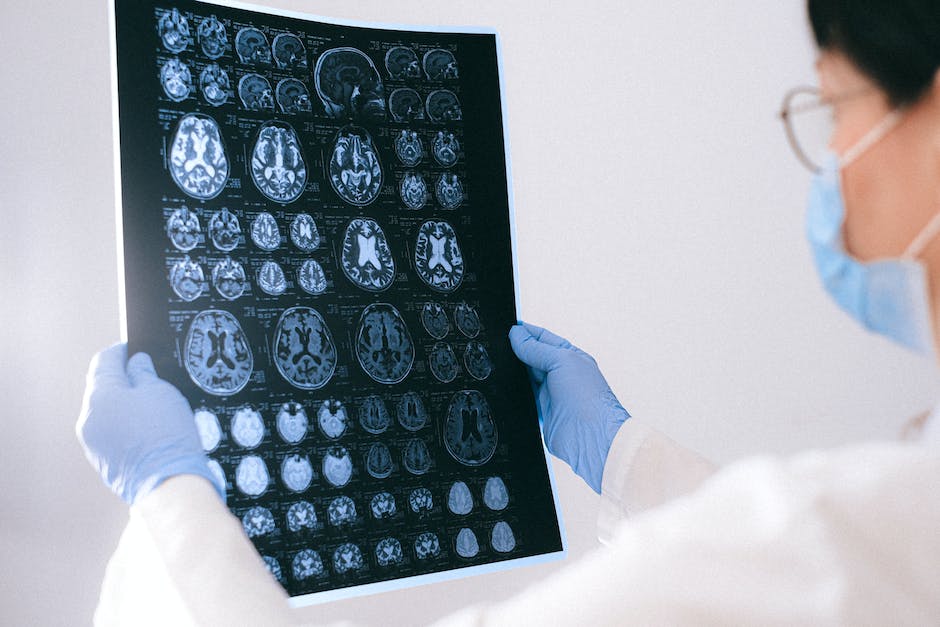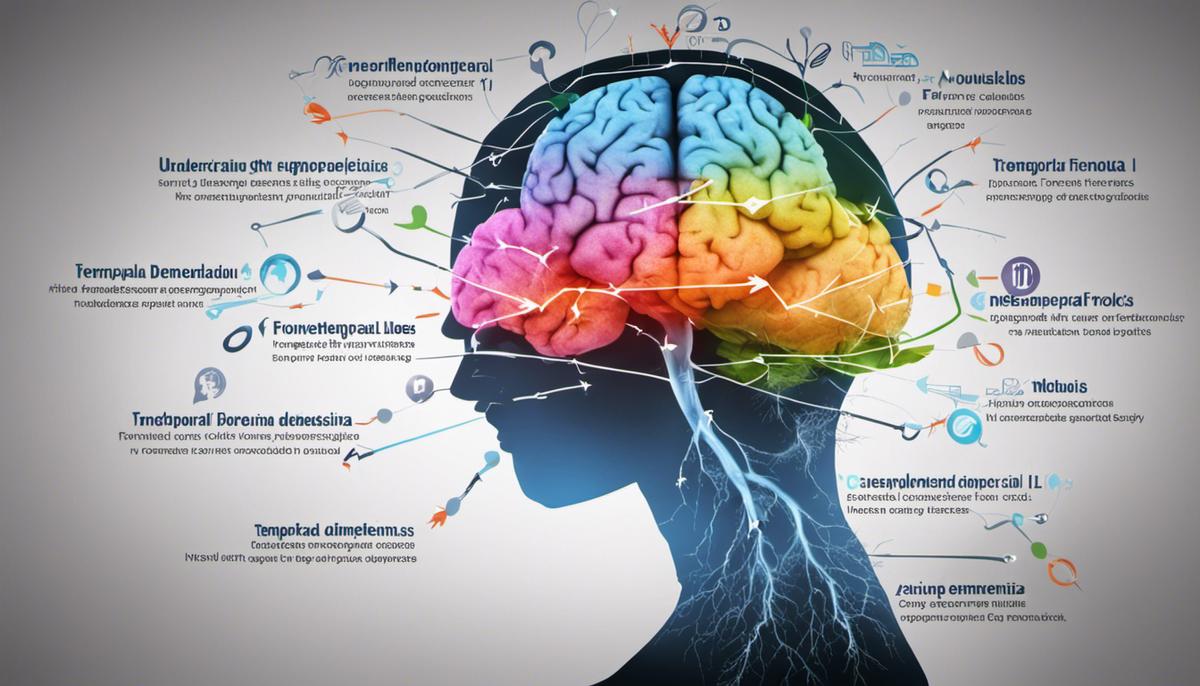Frontotemporal Dementia, often referred to as FTD, is a neurological disorder typified by the progressive degradation of the brain’s frontal and temporal lobes. This condition, while less talked about than Alzheimer’s, remains an integral part of the dementia spectrum worth exploring. Understanding its unique characteristics, distinguishing its symptoms, and identifying its various types provides vital information about this complex syndrome. Beyond knowledge of its nature lies the importance of uncovering its causes. From genetic to non-genetic factors, the origins of Frontotemporal Dementia have been the subject of continuous exploration in medical and scientific communities. Moreover, revealing the anticipated progression of the disease serves a significant role in managing and contending with its effects, while highlighting existing and potential treatments grants hope for those affected.
Table of Contents
Understanding Frontotemporal Dementia
Frontotemporal Dementia: An Exploration Into the Effects on the Human Brain
Frontotemporal dementia (FTD) represents a major cluster of degenerative conditions characterized by progressive impairment in behavior, language, and cognition, predominantly due to the degeneration of the frontal and temporal lobes of the brain. Unraveling these challenging phenotypes allows us to understand more deeply how intricate processes within the brain weave the tapestry of human consciousness and identity.
To delineate the meaning of frontotemporal dementia, one must address its key symptoms, which are primarily cognitive impairments. These typically manifest as changes in personality and behavior, language difficulties, or problems with mental abilities. Unlike Alzheimer’s disease, where memory loss is prevalent, FTD tends to preserve memory while profoundly affecting personality and social comportment. This is a testament to the intricate roles the frontal and temporal lobes play in governing our thoughts, actions, and who we fundamentally are.
The brain, a ceaselessly working hub of complex connections, relies on healthy neurons to accurately transmit information. In frontotemporal dementia, these neurons in the front and side regions of the brain begin to waste away, or atrophy. The gradual loss of these neurons and worsening atrophy results in reduced ability to accomplish cognitive and physical tasks. More importantly, these changes lead to the symptomatic expressions of personality changes and language difficulties that signatures FTD.
To illuminate the profound behavioral changes seen in Frontotemporal Dementia, it is necessary to delve into the role of the implicated brain regions. The frontal lobe, responsible for executive functioning, plays a crucial role in decision-making, personality expression, and behavior regulation. Deterioration in this area consequently manifests as socially inappropriate behaviors, impulsivity, apathy, and difficulties with planning and organization.
On the other hand, the temporal lobes, situated at the brain’s sides, are chief architects behind our language and semantic understanding abilities. The left temporal area is particularly attuned to language production and comprehension. Consequently, atrophy in this area leads to aphasia, marked by difficulties in understanding, or producing speech.
Discovering effective treatment modalities for frontotemporal dementia remains an ongoing quest in neuroscience. Presently, management strategies are primarily symptomatic, aiming to ameliorate behavioral changes and support the affected individual’s cognitive function. However, the promise of targeted therapies employing disease-modifying agents provides a glimmer of hope to those coping with these aforementioned cognitive ailments.
In conclusion, the critical role played by the frontal and temporal lobes in our behavior, personality, decision-making abilities, and language comprehension becomes glaringly evident when one examines the effects of frontotemporal dementia. This dynamic and emerging field of neuroscience continues to underscore the marvel of the human brain, its vulnerability, and its unyielding resilience.

Unveiling the Causes of Frontotemporal Dementia
As we delve further into the fascinating, yet undeniably perplexing study of Frontotemporal Dementia (FTD), our focus naturally veers towards its development process. With an intricate interplay of factors at work, understanding the composition of this dire equation is as important as reckoning with its effects.
Genetic factors prompted researchers to develop a keener insight into the nuanced underlayers of FTD. Indeed, around one-third of FTD cases appear to possess a familial tendency, hinting at underlying genetic mutations. Several mutations associated with FTD have been identified in multiple genes, such as the MAPT gene, which encodes a protein called tau. Faults in this gene lead to the production of abnormal tau protein, which further aggregates in brain cells, inflicting their functions and often leading to their premature death.
Another gene of interest is the GRN gene, encoding a protein named progranulin. Mutations in GRN reduce the levels of progranulin in the brain, a compound found vital for neuronal survival. Then, there’s also C9ORF72, whose mutations are the most common genetic cause of FTD. While the precise function of C9ORF72 remains partially understood, what’s certain is that its fault induces the buildup of pathogenic proteins within neurons, notoriously disturbing their functionalities.
Beyond genetics, environmental factors, too, influence FTD development, although their specific contribution remains sketchy at present. Among these factors, past brain trauma, immune-mediated conditions, and exposure to neurotoxins are suspected to modify disease onset and progression. Albeit remaining largely anecdotal, certain lifestyle factors like smoking and high alcohol use have also been suggested as potential contributors.
While age remains the most significant risk factor, it is necessary to emphasize that FTD is not a normal part of aging. The majority of FTD cases manifest between the ages of 45 and 65, reinforcing the fact that FTD remains a strikingly early-onset form of dementia, distinguishing it from Alzheimer’s Disease which predominantly affects individuals over the age of 65.
In a bid towards more comprehensive understanding, the synergetic dynamic between these diverse factors – genetic, environmental, lifestyle, and age – is further posited. Seekers of knowledge continue to probe and delve into this confluence, attempting to unravel the complex story of FTD development.
Scientific endeavours dedicated to broadening the understanding of FTD are not merely geared towards comprehension for comprehension’s sake. Rather, the gravity of this quest lies in its profound real-world implications. With an enhanced understanding of FTD’s development arises the potential for better, more personally tailored treatments. It provides hope for mitigating, and perhaps even circumventing, the often devastating symptoms that FTD imposes upon its bearers.
The journey into decoding the development of Frontotemporal Dementia has seen compelling strides and encountered perplexing roadblocks. It is a narrative that continues to unfold, just as science itself ceaselessly foments, persistently unravels, and tirelessly ventures on.

Studying the Progression of Frontotemporal Dementia
The journey through Frontotemporal Dementia (FTD) develops characteristically over time in a series of stages that gradually erode a person’s abilities and change the essence of who they are. The progression of FTD is intricately connected to the ongoing atrophy of the frontal and temporal lobes, a process that unfolds gradually but inexorably over a period of years.
Clinically, FTD’s progression can be divided into an early stage, a middle stage, and a late stage. There is often a protracted preclinical period that can last for several years, where subtle personality changes and cognitive impairments may emerge before definitive diagnosis is made.
In the early stage, the most noticeable changes revolve around personality, behavior, and language. Individuals may exhibit socially inappropriate behavior or a blunted emotional response, indicating the dissolution of the frontal lobes’ regulation on decision-making and the expression of personality. However, at this stage, individuals may still continue functioning relatively normally in daily life, albeit with support and guidance from caregivers.
The middle stage is marked by worsening of behavioral symptoms and onset of more overt cognitive deficits. There may be a substantial decline in personal hygiene, dietary habits and an increased neglect of personal safety. Struggles with language become more pronounced, as speech becomes sparse and muddled, reflecting advanced deterioration in the temporal lobes.
During the late stage of FTD, the individual becomes noticeably dependent on caregivers. Cognitive and physical abilities decline significantly, resulting in a need for round-the-clock care. Severe impairments in language production and comprehension make communication challenging, while memory loss, spatial skills, and motor coordination may also be significantly affected.
It should be noted that the rate of progression of FTD varies widely among individuals and is influenced by multiple factors including genetics, overall health, age at onset, and the precise areas of the brain affected. This individual variation makes predicting the trajectory of each case a profound challenge.
Research into FTD and its progression is a robust and vibrant field brimming with interwoven threads of academia, medicine, and science. New advances in understanding the genetic and molecular basis of the disorder are offering healthier prognostications and spearheading the formulation of better, more targeted treatments.
Although the journey through FTD is fraught with complexity, every step taken by a scientist, clinician, or caregiver is an affirmation of the profound resilience and untiring spirit of those affected. This realization further galvanizes the quest to unlock the riddles of frontotemporal dementia and propels the ongoing journey of scientific exploration and understanding.
In essence, the study and understanding of FTD is not solely an endeavor of scientific and medical progress; it is a testament to the power of human determination and the unyielding quest for a world free from the scourge of dementia. Without a doubt, the expedition through the intriguing maze of the human brain riddled with FTD is a stepping stone of immense importance in the pantheon of neuroscience and neurology research.

Preventing and Treating Frontotemporal Dementia
As we steer the conversation towards available methods of treating and preventing frontotemporal dementia (FTD), it’s essential to comprehend that FTD, like most neuroscientific enigmas, is a complex disease without a known cure at present. However, a closer observation exposes the multifaceted approach embedded in mitigating the effects of FTD.
Treating FTD largely involves administering medications aiming to manage symptoms and improve quality of life. This maneuver can be challenging due to variations in symptoms among patients. Behavioral symptoms—the most prevalent being personality alterations and improper social behavior—dominate the symptomatic landscape of FTD. Medicine that regulates serotonin, a neurotransmitter involved in mood regulation, proves beneficial in many cases. Selective serotonin reuptake inhibitors (SSRIs), for instance, are often employed to manage obsessive or compulsive behaviors.
Cognitive symptoms of FTD, while not as prominent as behavioral symptoms, can be debilitating. In the realm of pharmacological interventions, acetylcholinesterase inhibitors—commonly used in treating Alzheimer’s—are less efficient in FTD cases, due to different neuron populations undergoing degeneration. That said, memantine, a non-competitive NMDA receptor antagonist, has been observed to demonstrate minor improvements in some patients afflicted with cognitive deficits.
On the frontier of motor-related symptoms—specifically for FTD patients with alsor Parkinsonism—dopaminergic medications, including carbidopa and levodopa, may demonstrate effectiveness. However, their utilization requires meticulous supervision, as they could exacerbate behavioral symptoms.
Outside medications’ compass, non-pharmacological interventions remain critical components of an integrated FTD management approach. Neuropsychiatric interventions involving individual and family counseling are vital for acquainting patients and their kin with the disease, its trajectory, and strategies for addressing behavioral and emotional changes.
Cognitive and speech therapy prove instrumental for those with language-related FTD. Training in alternative communication methods, such as visual aids, may circumvent impairments in speech production or comprehension. Similarly, physical and occupational therapy can help patients maintain feeding skills and daily living activities during the disease progression.
Moving towards prevention of FTD—a terrain yet largely uncharted—it’s critical to remember that the complexity of the disease makes simplistic risk elimination implausible. Yet, when genetic predispositions are revealed via mutation discovery in the MAPT, GRN, or C9ORF72 genes, genetic counseling can provide essential information to patients and families about potential risk, mutation inheritance, and planning for the future.
Research in FTD prevention is broadening, driven by emerging knowledge about its molecular and circuit-level underpinnings, enhanced imaging techniques, and more precise animal models. Clinical trials testing disease-modifying drugs are underway, and the science community waits with bated breath for news of a breakthrough.
Progress in FTD research will pivot on a multidisciplinary approach, incorporating molecular biology, genomics, neuroimaging, neuropsychology, and clinical studies to uncover these syndromes’ core mechanisms. Future explorations of novel therapeutics—ranging from stem cells and gene therapy to personalized medicine informed by precision genomics—are already leaving footprints on the horizon.
The trajectory of FTD is undoubtedly a sobering journey for patients and their families alike. Yet, amidst these adversities, resilience and courage are emboldened. The collective endeavor of dedicated scientists, clinicians, caregivers, patients, and families fuels the continuation of the voyage towards understanding, treating, and ultimately preventing FTD. The perspective of a conquered FTD is more than an ambition—it is an eventuality that inspiration, science, and tenacity inch closer to every day.

Despite the many challenges brought about by Frontotemporal Dementia, the relentless pursuit in searching for a cure and preventive measures continue. Current interventions, encompassing traditional medications, therapeutic approaches, and lifestyle modifications, offer amelioration and improved quality of life for individuals affected by FTD. The landscape of FTD management is in an exciting phase of evolution, furthered by robust research and novel approaches aiming to eradicate the disease. Such promising prospects serve as a beacon of optimism in the future of Frontotemporal Dementia management, prevention, and potentially, its complete obliteration. The collective efforts against FTD mark a step forward in creating a future where dementia is no longer a cause for worry but a conquered adversary of the past.

Rajan Moonbeam is a dedicated health writer with a Master of Public Health (MPH) degree. Specializing in holistic wellness and preventive care, Rajan combines scientific research with natural approaches to health, offering readers practical advice on living their healthiest life. His work is a beacon for those seeking to navigate the path to well-being with integrity and balance.

